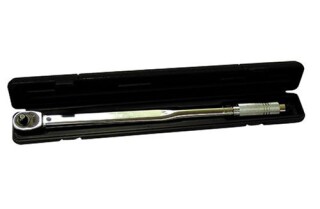If you’ve never bought a nailer before, shopping for your very first nail gun can be a bit overwhelming. With so many types of nail guns available on the market, each with its specific uses, it can be difficult finding the perfect nailer for your needs.
While all nail guns do the same thing - drive a nail in place of a hammer, there is a great deal of variety to their seemingly basic use cases. In this post, we’ll explore six of the most functional types of nailers you’ll ever need for your various construction projects.
Pneumatic coil nailers
These are pressure-powered nail guns predominantly used for roofing projects, though they also excel at other tasks like exterior drywall fixing, framing, deck building, fence building, etc. They are sometimes referred to as roofing nailers because of how often they’re used in roofing jobs.
As with most pneumatic nailers, they have large magazines, containing up to 150 coil nails.
Pneumatic palm nailers
Think of palm nailers like mini-nail guns. They are called palm nailers because they fit in the palm of your hand, and operate almost as well as their full-sized counterparts with certain limitations.
Pneumatic nailers are arguably the most powerful type of palm nailers while their flexibility, accuracy, and size are their biggest strengths. Because they are so small, they are more ergonomic to use and easier to handle for long periods.
Palm nailers are great for tight spots, small projects, joist hangers, and rely on regular nails -the type you use with an everyday hammer. You can use nails between 1.4 inches to 6 inches long, depending on the model you’re using.
Staple gun
While staple guns are technically not nail guns, they function in the same capacity more or less, fastening together a wide range of materials and objects.
They are a great investment regardless of whether you’re a DIYer looking to fix up your home, or you’re just dealing with smaller, personal projects. You can use a staple gun for light carpentry and home repairs, light wood construction, wall and floor carpeting, and upholstery.
Staple guns are compatible with varying lengths of staple sizes and lack the power of a full-blown staple gun - pneumatic or electric. They are best used as supplements or finishers.
Framing nailers
Framing nailers are a must-have if you plan on tackling any major wood framing and remodeling work for your home. They are heavy-duty nailers, designed to handle the harsh working environment of construction sites. They’re also well-balanced and more durable than Brad nailers and coilers.
Framing nailers feature a streamlined body for easy maneuverability and can be powered by pressure or electricity. There are two main types of framing nailers. The round heads are preferable for DIYers as they enjoy fewer building restrictions, while clipped head nailers feature a more robust cartridge and can carry more nails.
Brad nailers
Brad nailers are the go-to nailer for finishing work and smaller projects like window trims, casings, and bird feeders. They use nails with smaller diameters and disappear into the wood casing upon use. They are also excellent placeholders for glue work and are easy to cover up. They are compatible with 15, 16, and 18 gauge nails and are typically used for baseboards, crown molding, and trim work.
Pneumatic Brad nailers are the most common type of brad nailers. Electric nailers are also available and easy to use.
Finish nailer
Finish nailers are very similar to Brad nailers, and woodworkers often argue which is better for finishing work. Like the Brad nailers, they use 15-16 gauge heads with no heads, making administering http://arstechnica.netblogpro.com/bestcovery/best-wood-filler easier.
The biggest difference between them is that finish nailers use thicker and longer nails, which give them more versatility and strength. They are used for installing baseboards, crown molding, building cabinets, installing hardwood floors, and woodworking.
Hopefully, this overview has given you an idea of what each nailer does, and how they could possibly fulfill your needs.






